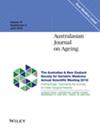Towards cultural inclusion for older adults from culturally and linguistically diverse communities: A commentary on recent aged care reforms
Abstract
Objective
Due to the high and increasing number of older people from culturally and linguistically diverse (CALD) backgrounds in Australia, it is essential to ensure that the upcoming Support at Home program and other new initiatives incorporate culturally responsive aged care provision. Failing to address these challenges perpetuates inequalities in access to quality care for CALD older adults.
Methods
This paper reviews recent reforms and initiatives in aged care, identifies culturally responsive provisions and proposes new approaches for upcoming reforms that focus on CALD older people and their support networks. We summarise current standards of cultural appropriateness in aged care to identify areas for improvement.
Results
There are instructive interactions between cultural responsiveness and standardising or mainstreaming provision in recent aged care policies and initiatives. We argue that culturally adapting the aged care assessments and Support at Home frameworks through co-production collaborations in the Aged Care Data and Digital Strategy (2024–2029) is not just beneficial but necessary. These actions involve (i) developing culturally tailored assessment tools that consider linguistic and cultural factors, such as using bilingual questionnaires and incorporating culturally responsive communication materials, and (ii) incorporating cultural competence training. Implementing these changes, though complex, will enable equitable and inclusive aged care. It involves overcoming language and cultural barriers that impede effective communication and care.
Conclusions
We advocate for ongoing testing and evaluation of these approaches to determine their feasibility for integration into digitisation plans within the aged care sector.

 求助内容:
求助内容: 应助结果提醒方式:
应助结果提醒方式:


